Revani or ravani is a syrup-soaked cake made with fine semolina flour. You can find it in many eastern countries under different names, and it originates in Egypt, where it’s known as mamounia. There are many variations of ravani in different countries. In Greece, you will find yogurt as one of the main ingredients and a citrus aroma coming from orange or lemon, depending on the region.
This traditional Greek dessert will take you just oven an hour to prepare and bake. One of the key ingredients, the semolina flour, is the one that gives it its unique texture, nutty flavor and the yellow color. It’s a fluffy and light sponge cake, moist from the syrup and full of citrus aromas from the lemon zest. We love having it with some vanilla ice cream on the side to balance the sweetness from the syrup or some whipped cream. So let’s get started!
Jump to:
Why you should try my recipe
- Easy steps to follow for the softest and most moist ravani cake.
- How to make the perfect syrup for soaking the ravani cake.
- Perfect with your coffee or tea, or as a dessert after your meal.
- Ready in just over an hour.
- Big tray to serve a big family or friends or save some for the next day.
Ingredients & How-to
To make this greek semolina cake or ravani, you will need fine semolina flour, plain flour, eggs, sugar, butter, yogurt, lemon and vanilla extract.

01. When I’m making desserts with syrup, I always start with making the syrup first, as it needs to cool down before pouring over the hot ravani cake. I add the water and sugar to a big pot. I squeeze half a lemon and add the lemon cup to the water as well. It will take around 5-10 minutes for the syrup to start boiling over medium heat.
02. When I start seeing lots of bubbles on the surface, I leave it just for a minute to continue boiling and then turn off the heat and leave the pot at the side to cool down.
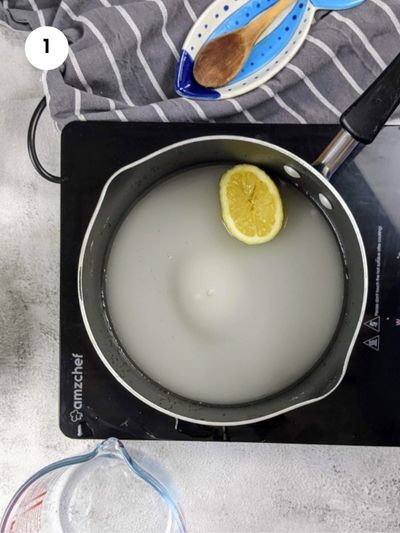
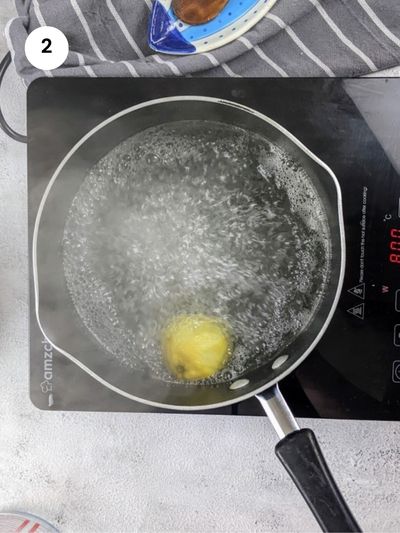
03. Now, I’m ready to start making the dough for the ravani. I first add the sugar and butter to a bowl. The butter needs to be at room temperature. I mix these two for 4-5 minutes using an electric hand mixer or stand mixer until the butter turns white and it’s all fluffy and airy.
04. Next, I’m adding the eggs to the batter one at a time while I continue using the hand or stand mixer to incorporate them.
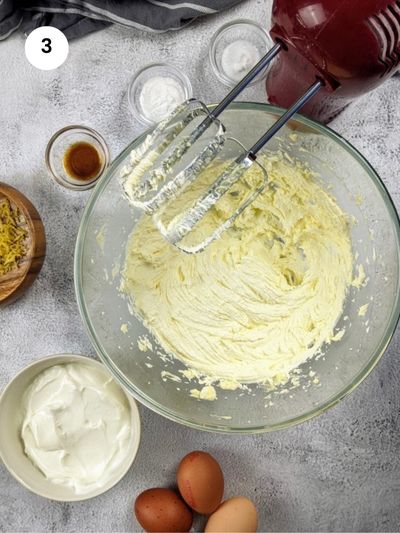
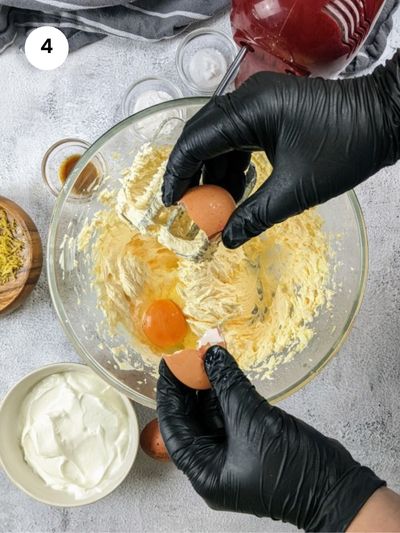
Mamazilla's Product Recommendations
This is a great hand mixer if you are on a low budget and can't afford or don't have space for a standing mixer. It has a whisk, beaters and dough hook to cover different needs.
Buy On Amazon05. Then, I’m adding the lemon zest, yogurt and vanilla extract to the mixture. I gently mix everything with a spatula, trying to keep the mixture fluffy.
06. Now it’s time to mix all the dry ingredients. In a separate bowl, I add the semolina flour, plain flour, baking powder and baking soda. I give it a stir to mix them and then I add them to the bowl with the rest of the ingredients. Again, gently I mix everything with the spatula until the flour is incorporated with the rest of the ingredients.
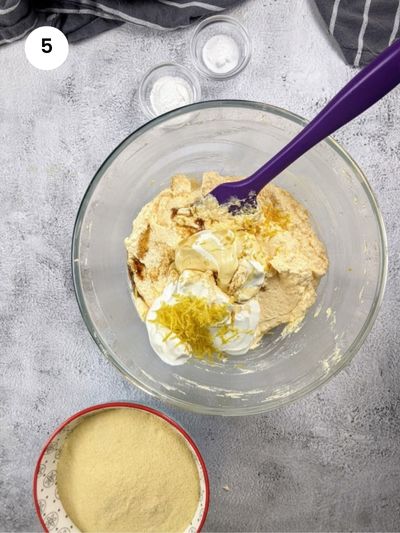
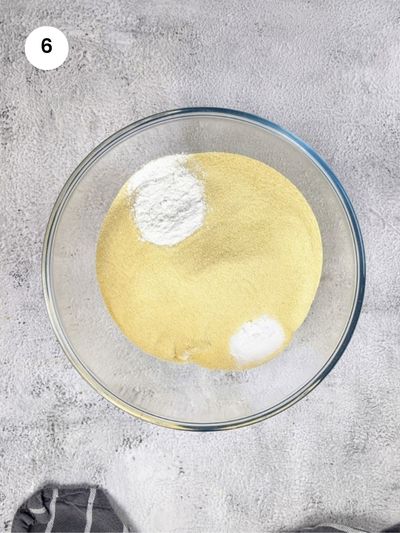
Mamazilla's Product Recommendations
This is a great semolina flour and it's imported from Greece. It's very fine and easy to blend which is essential when making puddings and cakes.
Buy On Amazon07. I’m using a rectangular pyrex tray for baking my ravani, but you could use any oven-proof tray you like. Make sure you coat the bottom and sides with butter so the ravani doesn’t stick to it after being baked. I spread the batter evenly and now we are ready for the oven. Make sure the oven is preheated to 180°C/350°F. It will take around 45 minutes for the ravani to rise and bake nicely.
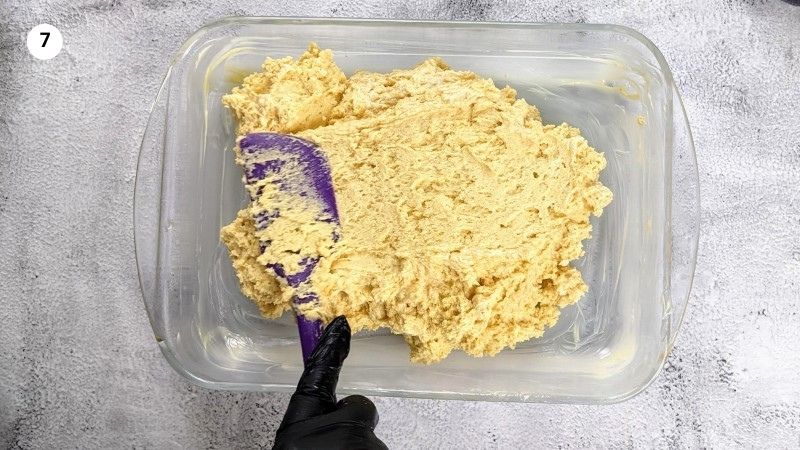
08. When you get it out of the oven, it will have a nice golden brown color. While the ravani is still hot, using a ladle, I pour over the syrup all around. When we are done with the syrup, we need to leave it to rest at least for an hour to cool down and soak in the syrup.
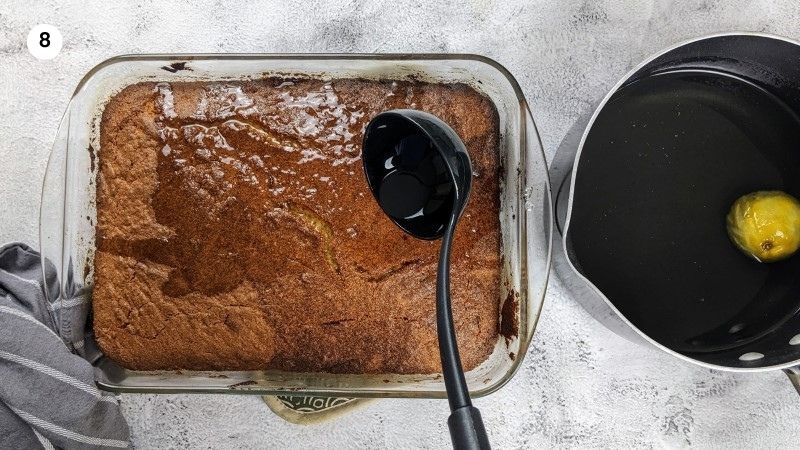
Mamazilla's Product Recommendations
This is a set of 2 pyrex baking dishes. Great for casseroles, baked food and puddings and easy to clean.
Buy On AmazonServing suggestions
This Greek semolina cake is one of those desserts that you could enjoy all year round. You could serve the ravani on its own or with a scoop of ice cream or some whipped cream on the side. Usually, we have a slice after food or in the afternoon as a treat.
Storage
If you have any leftover ravani, you could just cover it with a towel or kitchen foil and store it at room temperature for up to 5 days. To last longer, especially during summer when the temperature is high, you could cut it into slices and store it in the fridge for up to 10 days.
FAQ
Ravani or revani is a popular middle East syrup soaked cake. It is believed that the Egyptians were the first that introduced this dessert to other cultures where it's known as mamounia or the Arabic countries where it's known as basbousa.
For a perfectly soaked ravani, you should have cold syrup with a hot ravani, right after it comes out of the oven. Pour the syrup over the ravani using a ladle to slowly absorb it and evenly distribute it. Then you should leave it at least for an hour to cool down and absorb all of the syrup.
For a light ravani cake, you should make sure you beat the butter, sugar and eggs well for at least 5 minutes until airy and fluffy. Then gently mix the rest of the ingredients, trying not to keep a nice fluffy batter.
You could store ravani cake at room temperature for up to 5 days. In the summer, when the temperature is high, it is recommended to keep it in the fridge where it could last up to 10 days.
Recipe
Greek Ravani Semolina Cake
This traditional Greek ravani or revani cake is moist from a lemony flavored syrup, fluffy and nutty from the semolina flour. It's quite easy to make and it will take you just over an hour to prepare and bake. Serve it with a scoop of ice cream or some whipped cream on the side and you will have everyone asking for another slice. Enjoy!15 servings
15 minutes
Cake Ingredients
- 350gr / 2 cups fine semolina flour
- 150gr / 1 ¼ cup plain flour
- 150gr / ⅔ cup butter at room temperature
- 170gr / ¾ cup sugar
- 4 eggs
- 200gr / ¾ cup yogurt
- 2 teaspoons of baking powder
- 1 teaspoon of baking soda
- 1 teaspoon of vanilla extract
- lemon zest
Syrup Ingredients
- 750ml / 3 cups water
- 720gr / 3 ½ cups sugar
- ½ lemon
Equipment
- electric hand mixer (paid link)
- pyrex tray (paid link)
Instructions
- For the syrup, add the water and sugar to a pot. Squeeze the lemon just to get some drops in the pot and add the lemon cup to the pot too. When the water starts boiling, boil for 1 minute then turn off the heat and set aside to cool down.
- Add the sugar and butter to a big bowl. Using a hand or stand mixer, beat the butter with sugar until it's white and fluffy, for about 4-5 minutes.
- Add the eggs to the batter, one at a time while mixing. Add the yogurt, lemon zest and vanilla extract to a bowl and gently mix with a spatula.
- In a separate bowl, mix the flour, semolina flour, baking soda and baking powder. Add the dry ingredients to the batter and gently mix with a spatula until all the flour is incorporated.
- Spread the batter in an ovenproof dish around, around 35x23cm or 14x9 inches, that is greased with butter. Bake for 45 minutes in a preheated oven to 180°C/350°F.
- When you take out the ravani, pour the syrup with a ladle while it's still hot. Leave the cake to rest for an hour before serving.
Notes
- I'm using a pyrex rectangular tray for baking my ravani but you could use any ovenproof dish you like as long as it's filled till the middle when you add the batter.
- You could substitute the lemon with orange if you prefer.
Storage
Store the ravani at room temperature for up to 5 days or in the fridge for up to 10 days.
Nutrition Info (per serving)
I am not a nutritionist. The nutrition information has been calculated using an on-line calculator, and is intended for information and guidance purposes only. If the nutrition information is important to you, you should consider calculating it yourself, using your preferred tool.

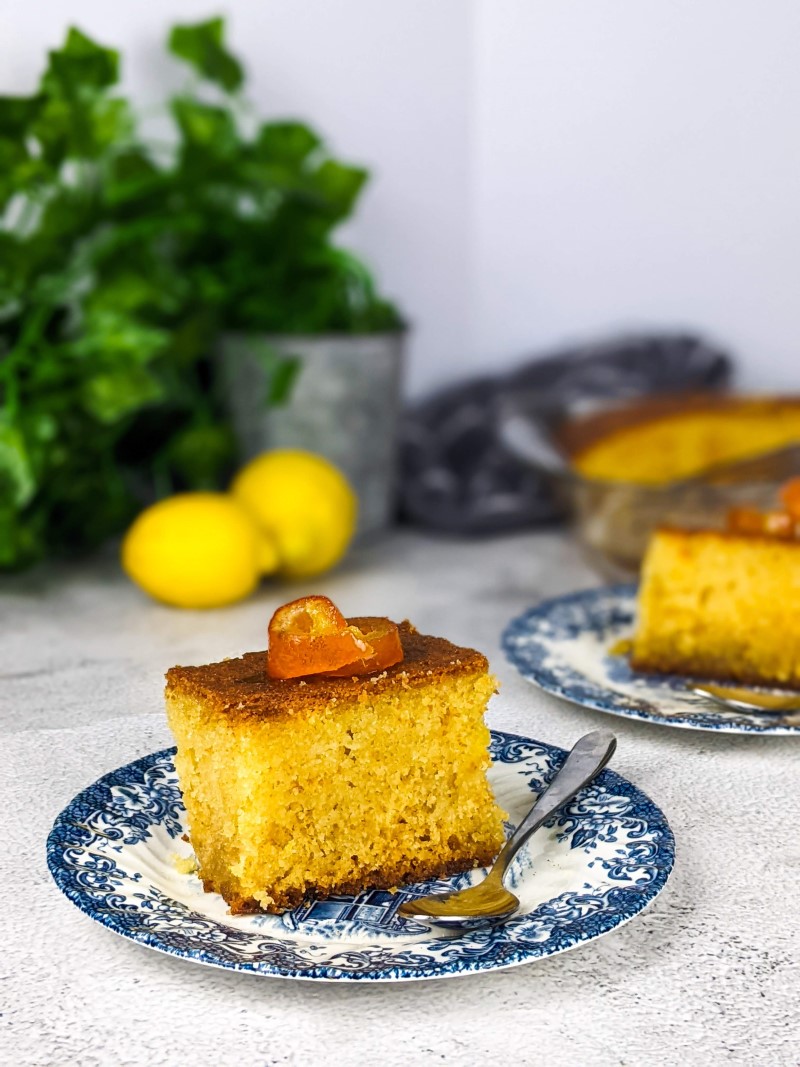



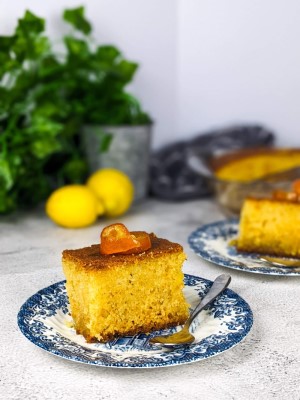

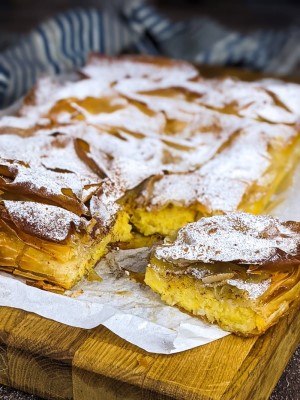
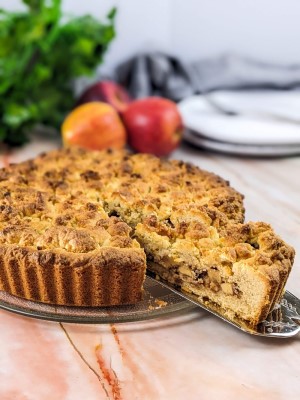

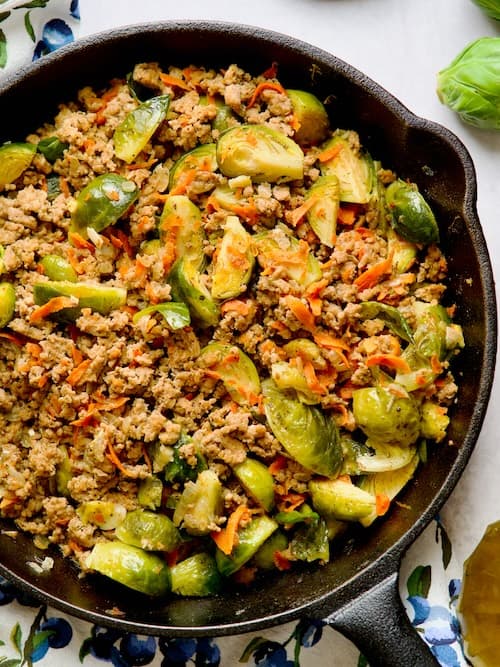









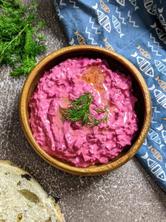
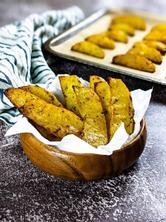
Comments